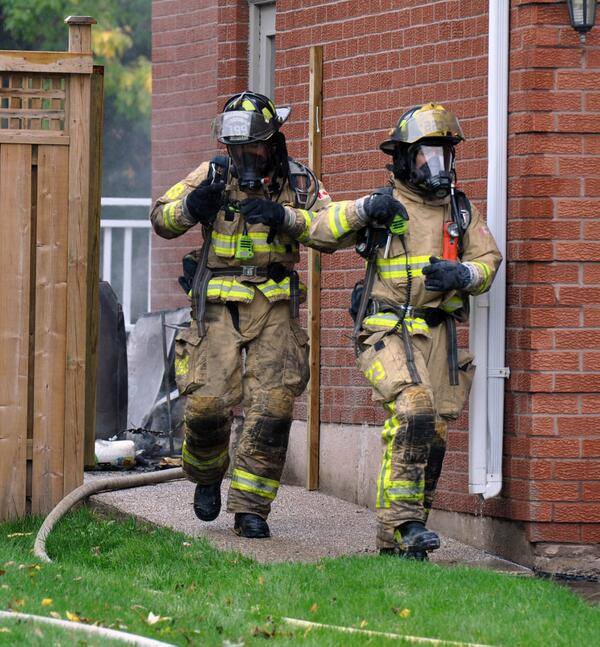Canada News
Ontario fire marshal to conduct tests after ‘flame jetting’ injuries and death

The office’s testing will look at the factors behind flame jetting, and will eventually result in a report to Health Canada, Tebby said. (File photo: Ontario’s Fire Fighters/Facebook)
TORONTO — The Ontario fire marshal’s office says it will conduct tests this fall to better understand how hand-held fuel containers could ignite and inadvertently become flame-throwers when used around products like ethanol-fuelled lamps and recreational fire pits.
The analysis comes as the office said it has noted four incidents in the last six years where the phenomenon — known as flame jetting — has occurred, leaving people with horrific injuries and, in one case, killing a woman.
“The impact of the injuries and fatalities are extreme on the people who are directly involved or in the area when it happens,” said Jeff Tebby, a supervisor with the quality assurance and risk management unit at the Office of Ontario’s Fire Marshal, which conducts fire investigations and provides fire safety guidelines in the province.
The office’s testing will look at the factors behind flame jetting, and will eventually result in a report to Health Canada, Tebby said, noting it would be up to the federal agency to decide what to do with the findings.
The results of the testing will also help the fire marshal office’s staff if they are called to testify about flame jetting in court, he said.
Flame jetting occurs when fuel is poured on products like lamps and fire pits that appear to be extinguished but aren’t, Tebby explained. Flames follow fuel fumes back to the fuel container, travel inside and combust. That propels liquid fuel out, turning the container into a flame-thrower, Tebby said.
“The person who is doing the pouring is usually not the one hurt, it’s the victim in the direct path of the flame jet,” he said.
One way to guard against the phenomenon is by having a flame arrester — plastic or wire mesh that absorbs heat from a container and prevents fire from travelling inside — on fuel containers, said Tebby, noting that it’s up to the product’s manufacturer to install one.
The four incidents of flame jetting the office is aware of all involved ethanol-fuelled appliances, Tebby said, adding that Health Canada was notified of the one that involved a fatality.
Hana Engel, an Ottawa woman who suffered severe injuries after a flame-jetting incident this spring, welcomed news of the testing.
Engel said she was in a friend’s backyard when a guest poured fuel on an outdoor fire pit, thinking the flames had died out. The container carrying the fuel ignited and was thrown, hitting Engel, she said.
The 24-year-old said she was left with second-and third-degree burns on a third of her body and underwent extensive surgery. She has since called for firmer regulations around fire-related products.
“You can’t be scared of (fire), but you can use it properly and have safety measures around it,” she said. “It’s never too late.”
The fatal incident involving flame jetting that the fire marshal’s office is aware of took place in August 2016, when a Peterborough, Ont., dentist was killed after an ethanol-fuelled lamp exploded.
Dr. Judith Buys was sitting near the lamp at a cottage when a friend, who thought the lamp’s flame had gone out, tried to re-fuel it, Buys’ family said.
Flames that flew out of the open refuelling container hit Buys, who died of severe injuries days later, said her husband, who is currently suing the maker of the lamp, alleging its product was unsafe.
James McGorman said it’s time for rules around fuel containers to change and called for flame arresters to be required on all containers with volatile substances.
“It’s time we had some action,” he said.
Health Canada said ethanol bottles are subjected to regulation under the Canada Consumer Product Safety Act, which requires the products to be labelled correctly with warnings of possible hazard. The rules contain no information about flame arresters.
One company that makes products like fire pits and lamps, and also sells bottles that contain fuel, said it puts instructions on its products warning users not to pour fuel directly onto a fire.
“It’s kind of a common-sense product,” said Justin Orr, sales director of Bio Flame, which does not make the fuel containers it sells. “You’d never pour fuel on a fire.”
Orr said Bio Flame recommends other companies in the industry put warnings on their products too.





















